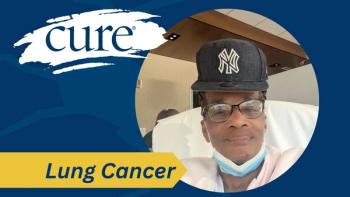
Taking Action To Address Lung Cancer Across the US
Researchers studied state-specific measures of disease incidence, adult smoking prevalence, radon zones, five-year survival, stage at diagnosis, five-year survival by stage at diagnosis, surgery as part of the first course of treatment and accredited lung cancer screening centers.
In the United States, lung cancer is most prevalent in Kentucky, according to a first-of-its-kind
The ALA’s LUNG FORCE “State of Lung Cancer” report examined data from several cancer registries and databases from 2009 to 2013. Researchers studied state-specific measures of disease incidence, adult smoking prevalence, radon zones, five-year survival, stage at diagnosis, five-year survival by stage at diagnosis, surgery as part of the first course of treatment and accredited lung cancer screening centers.
“Every state can do more to prevent lung cancer,” said Zach Jump, director of Epidemiology and Statistics, Research & Scientific Affairs at the ALA, in an interview with CURE. “Through this report, we saw that we can provide more information and expand everyone’s knowledge about lung cancer, increase awareness, drive change and save lives.”
This year, more than 234,000 people in the U.S. will be diagnosed with lung cancer, according to the American Cancer Society. The ALA report finds that these rates vary significantly by state. Although Kentucky was reported to have the highest incidence rate, Utah had the lowest. The ALA believes these rates are affected by smoking.
“Utah has the lowest smoking rate in the nation by far, Kentucky has the highest,” said Jump. “For a long time, there has been a very strong correlation that the states with the highest smoking rate have the highest lung cancer rate. And 85 to 90 percent of lung cancer is attributable to smoking.”
Researchers also found that Utah had the fewest number of lung cancer screening centers per million people at 0.7, while the most screening centers are found in Delaware at 21.1 per million people. The report findings showed that states with more accredited screening centers per capita generally had higher survival rates. “Each additional center per million people was associated with a 0.3-point increase in the disease survival rate,” the researchers wrote.
The ALA states that lung cancer is the leading cause of cancer death among men and women and that is largely because it is difficult to detect it in its earliest stages. Nationally, the five-year survival rate for lung cancer stands at 20 percent. Again, that percentage differs by state. For example, the researchers found that individuals that live in New York have a 24 percent five-year survival rate whereas those in Louisiana had 15.9 percent rate. However, only 31 states tracked this, noted the researchers.
“Survival is such an important metric for treatment and whether you have beaten the disease or not,” he said. “Lung cancer has an incredibly low survival rate. We know now that with screening we can catch it earlier. So, if you are eligible and in a high-risk group, then you are eligible for low-dose CT scans, which can reduce the mortality rate by 20 percent.”
Wyoming was found to have the highest percentage (23.3 percent) of cases diagnosed at an early stage and Hawaii was lowest at 15 percent. These are both compared with the national percentage, which is 18.9 percent.
Treatment for lung cancer depends on which type of disease a person has — non-small cell (NSCLC) or small cell lung cancer (SCLC). NSCLC can be treated with surgery, radiation therapy, chemotherapy, targeted therapies and immunotherapy. SCLC’s main treatment options include chemotherapy, radiation therapy and surgery.
Lung cancer is more likely to be curable if the tumor is removed through surgery, according to the ALA. The report findings show that across the country, 21 percent of people underwent surgery during their first course of treatment. It ranged from 30.1 percent in Massachusetts to 14.3 percent in Oklahoma.
According to Jump, the next steps would be to examine the health care systems in different states to see if this influences any of the metrics in the report.
“We want to make lung cancer part of the everyday conversation and get individuals to turn that into action at the political level, to change policies and make it a topic that people are acting on,” said Jump. “Right now, it seems to be a state-level issue.”




